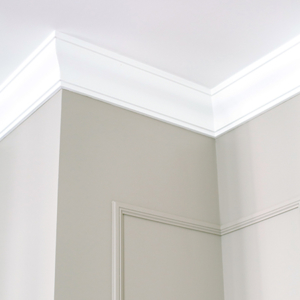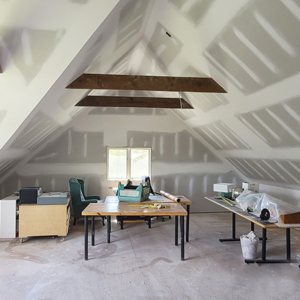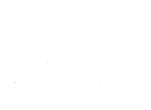Enhance Your Home with Crown Molding
 Crown molding can create a pleasing visual presence and add value to your home. No matter what type you choose, crown molding imparts a classic touch of elegance that never goes out of style.
Crown molding can create a pleasing visual presence and add value to your home. No matter what type you choose, crown molding imparts a classic touch of elegance that never goes out of style.
The history of crown molding and its different styles is quite interesting. It goes back to Ancient Greece, where the rules of proportion were first determined. Today, there are many styles of crown molding to choose from, in a variety of proportions for different room sizes and ceiling heights.
Is Crown Molding Right for Your Home?
Crown molding is a bit ornate for contemporary homes with modern interiors. It also can be a challenge in rooms with cathedral or vaulted ceilings.
However, any home that’s colonial-style, historic, antique, or traditional can benefit from the addition of crown molding. Experts recommend installing crown in the most-used rooms of your home—living, dining, family rooms, kitchen. However, adding crown molding to the main bedroom is a great way to give a sophisticated look and warm feel to the space.
Molding is not the same as crown molding. The term molding refers to trim work installed anywhere in the home (along the floor, around windows and doors, etc.), whereas crown molding applies specifically to molding installed where walls meet the ceiling.
Crown Molding Adds a Decorative Touch That Serves Several Purposes
As decorative as crown molding is, it’s also practical. It covers gaps where surfaces come together unevenly, leaving unsightly cracks. Crown molding beautifully hides these imperfections.
Crown molding has other benefits. According to architect James Dixon, “When it’s done right, crown molding helps lift the space, drawing your eye up to make the ceiling feel higher.” He adds, “It’s a lovely bit of detail that can bring out the faded grandeur in an old house, while also hiding all sorts of sins—even distracting the eye from cobwebs or peeling paint.”
Choosing a Crown Molding That Works for Your Home
There are many sizes and types of crown molding to choose from. A good rule of thumb is to consider heavier moldings for larger, more elaborate rooms and lighter crown designs for smaller, simpler rooms. For rooms with less than eight feet of height, think about choosing a molding that covers less wall surface and projects more out onto the ceiling.
If you should decide to add crown molding, whatever the style, your home is bound to look more polished and eye-catching. You will enjoy the beauty for years to come and appreciate the value it adds to your home.
The Drywall Specialist installs all types of trim, molding, and crown molding. Call (860) 339-6975 for an estimate.

 At some point, homeowners may seek more space in their homes for a variety of reasons. A parent or another relative may need to move in, a grown child may move back home, or the homeowner may want to take on a new hobby, have a home gym, or create a quiet space to work from home.
At some point, homeowners may seek more space in their homes for a variety of reasons. A parent or another relative may need to move in, a grown child may move back home, or the homeowner may want to take on a new hobby, have a home gym, or create a quiet space to work from home.